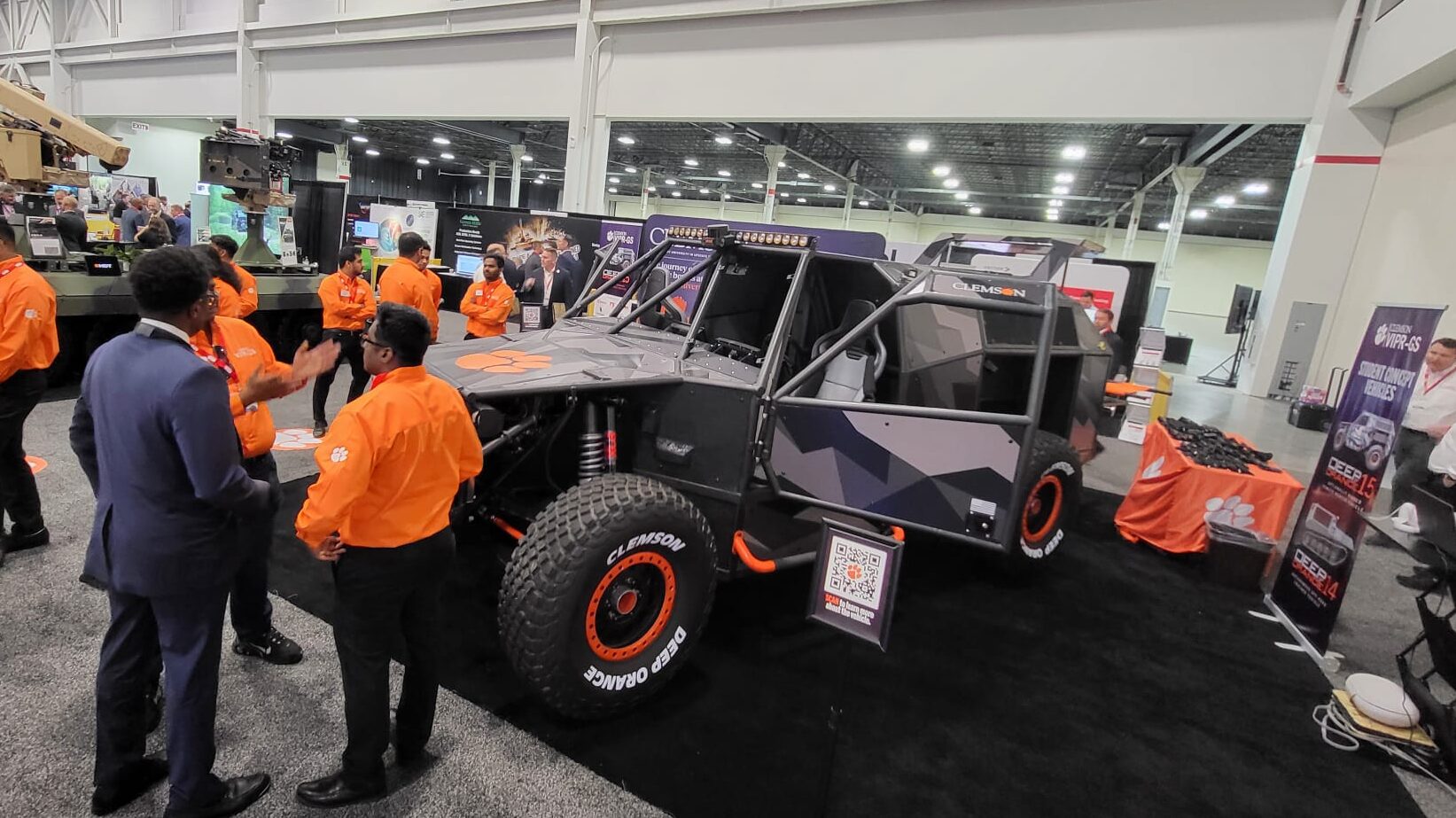Clemson engineers show off Deep Orange 15, a high-tech rugged rescue vehicle meant to help the Army push autonomous ground tech ahead. (Flavia Camargos Pereira / Breaking Defense)
GVSETS 2024 — The US Army’s DEVCOM and Clemson University unveiled today a new semi-autonomous, optionally piloted ground rescue vehicle dubbed Deep Orange 15.
Designed to be a high-speed, off-road platform, the futuristic-looking vehicle is on display here at the 16th Annual Ground Vehicle Systems Engineering & Technology Symposium (GVSETS) in Novi, Michigan.
The platform was built under Clemson’s Deep Orange program, which supports the Army’s efforts to advance and deepen the use of autonomous, uncrewed and optionally manned ground platforms – an area in which they’ve run into a few glitches recently.
“We are providing this vehicle basically to the Army so they can use it as a research platform, collect data on various terrains, run on the rocks, in the desert sections,” Aniruddha Joshi, power train systems and controls engineer and engineering project manager in the Deep Orange 15 team told Breaking Defense. “That data will be helpful for them to build their next-generation vehicles”.
The system was developed in 18 months for deployment in challenging environments to perform disaster relief and off-road terrain rescue missions. It features artificial intelligence (AI) motor assistance, semi-active suspension, and specialized SAR capabilities, according to a Clemson University’s press release
Deep Orange 15 is also fitted with four individual motors, which run its four individual wheels. Connected with the generators, its diesel engine generates energy and provides it to the battery.
According to Joshi, the vehicle’s Light Detection and Ranging (LiDAR) system provides high-resolution 3D spatial data for detecting obstacles, identifying terrain features, and creating detailed maps.
In the previous GVSETS edition, in 2023, the Army and Clemson showcased Deep Orange 14, a tracked vehicle engineered for deployment in urban reconnaissance and natural disaster relief missions in addition to navigating on unknown and challenging terrains.
Joshi explained that the newest platform provides advanced capabilities compared to the Deep Orange 14 and can autonomously travel from the starting point to where the rescue situation is and then return.
“The autonomy sensors, LiDAR, and cameras are helping to map the environment. So, from point A to point B, all the waypoints will be collected and then the path will be traced back by the vehicle. It will drive itself back with the patients in the back”, he remarked.
The platform already passed through a three-week trial in Clemson’s facilities in which its powertrain and mobility were tested. The coming phases of the program will involve additional tests as well as maneuverability improvements.
“The next steps are to build on top of the software of the vehicle because hardware is pretty much done, and get the vehicle to the actual off-road track to evaluate all its performance,” Joshi added. Then, he said, it’s off to the Army in a matter of months.











